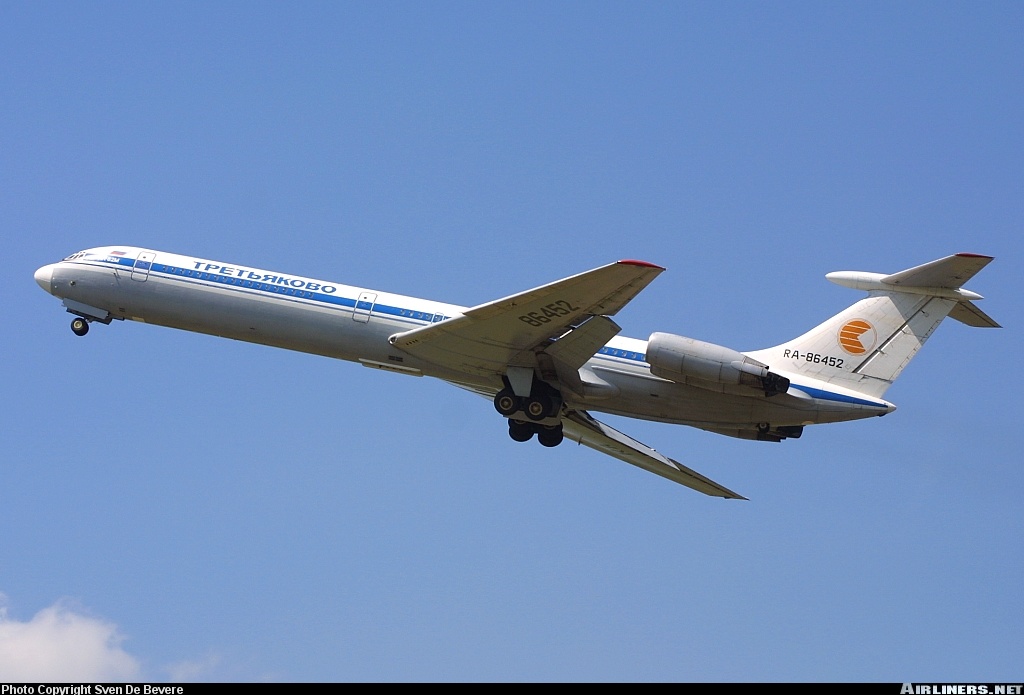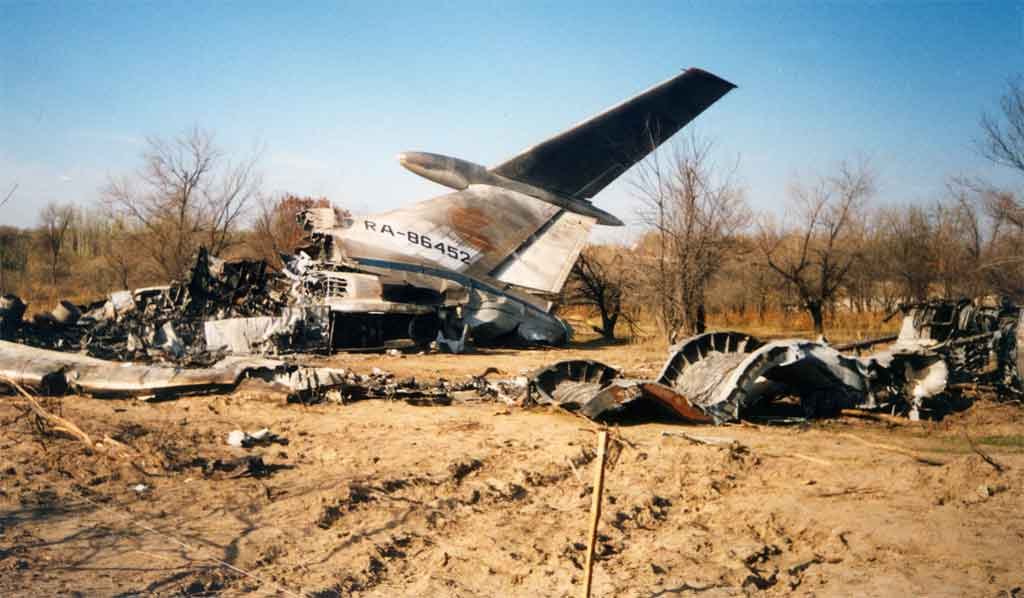Zone
Crash of a Tupolev TU-204-100 in Moscow
Date & Time:
Mar 22, 2010 at 0235 LT
Registration:
RA-64011
Survivors:
Yes
Schedule:
Hurghada - Moscow
MSN:
14507413640
YOM:
1993
Flight number:
TUP1906
Crew on board:
8
Crew fatalities:
Pax on board:
0
Pax fatalities:
Other fatalities:
Total fatalities:
0
Captain / Total hours on type:
1868.00
Copilot / Total hours on type:
979
Aircraft flight hours:
18335
Aircraft flight cycles:
4795
Circumstances:
The aircraft was returning to Moscow on a ferry flight after passengers have been dropped off in Hurghada. On approach to Moscow-Domodedovo Airport, the visibility was low due to foggy conditions. Horizontal visibility on runway 14L threshold was 1,300 meters and vertical visibility was 200 feet. In flight, the flight computer failed and the crew continued the approach below minimums. Despite he was not able to establish a visual contact with the runway, the captain continued the approach and failed to initiate a go-around procedure. The aircraft descended below the glide, impacted trees and crashed in a dense wooded area located 1,450 metres short of runway. All eight occupants were injured, three seriously. The aircraft was destroyed.
Probable cause:
The crew performed an approach in below-minima weather conditions for an airplane with a defective flight computer. The crew failed to initiate a go-around procedure while unable to establish a visual contact with the runway.
Contributing factors were:
- Insufficient training of the crew to perform approaches at or near weather minimums,
- Lack of control over the activities of the crew, which led to poor resource management (CRM) of the captain,
- Failure of the flight control computer system, which led to an increase in the allowed weather minima of the aircraft,
- Failure of captain to divert to another airport,
- Failure of captain to decide about a missed approach when there was visual contact with the approach lights,
- Failure of the co-pilot to call for a missed approach,
- Unsatisfactory interaction in the crew, resulting in a descent below safe altitude.
Contributing factors were:
- Insufficient training of the crew to perform approaches at or near weather minimums,
- Lack of control over the activities of the crew, which led to poor resource management (CRM) of the captain,
- Failure of the flight control computer system, which led to an increase in the allowed weather minima of the aircraft,
- Failure of captain to divert to another airport,
- Failure of captain to decide about a missed approach when there was visual contact with the approach lights,
- Failure of the co-pilot to call for a missed approach,
- Unsatisfactory interaction in the crew, resulting in a descent below safe altitude.
Final Report:




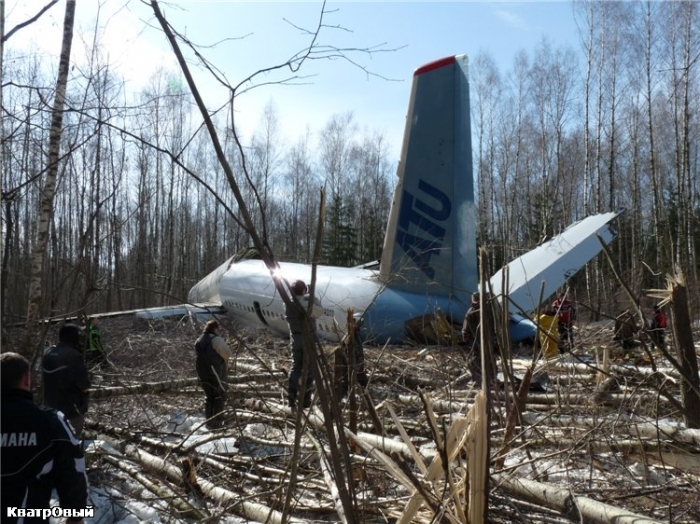

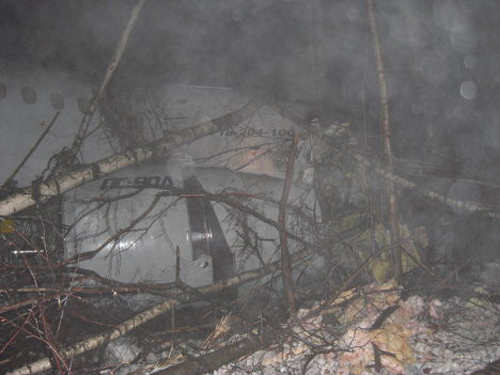
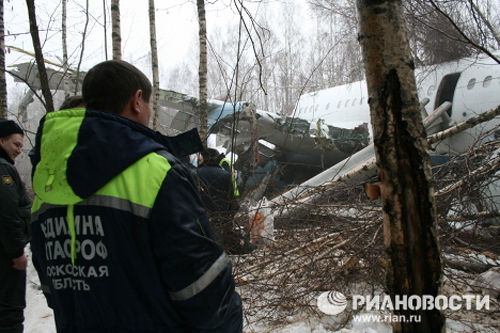
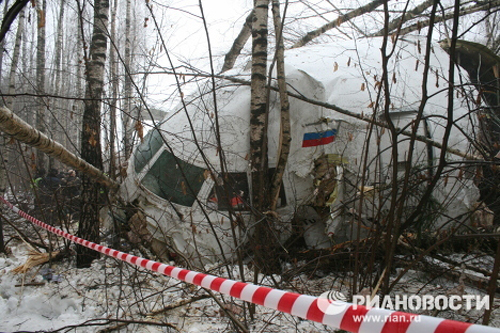
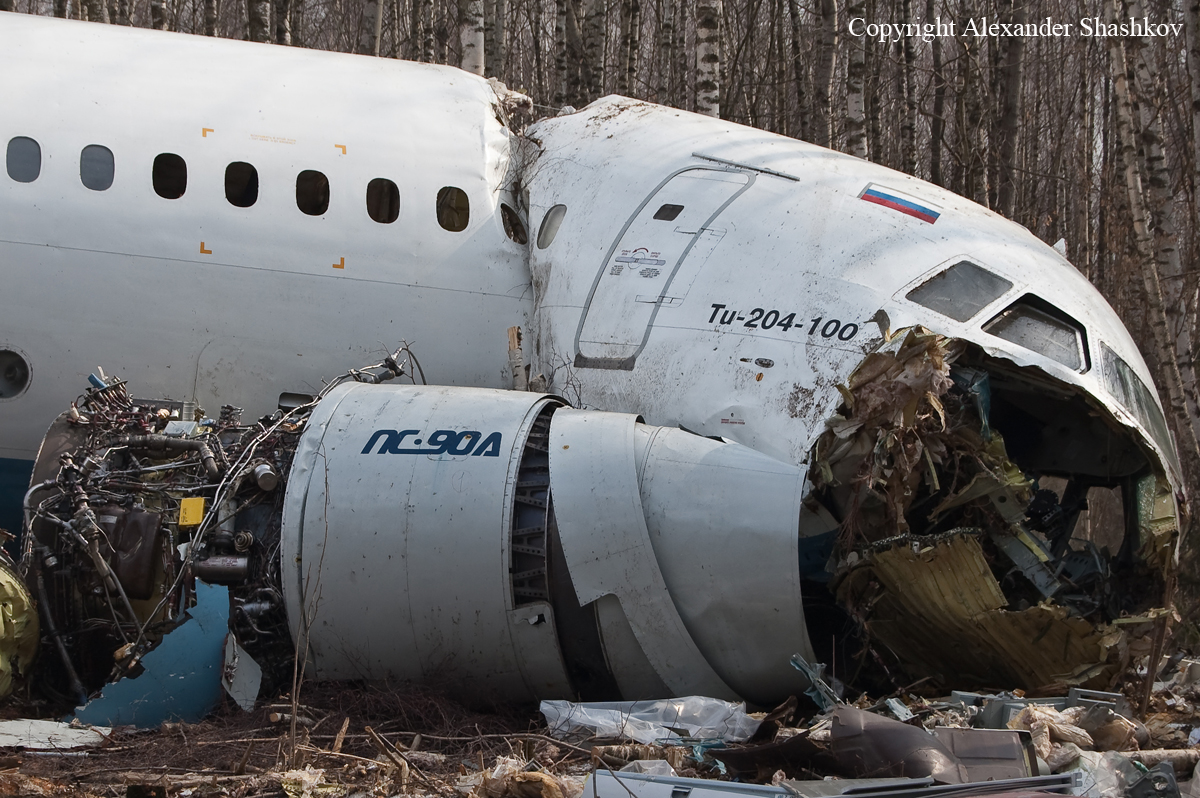
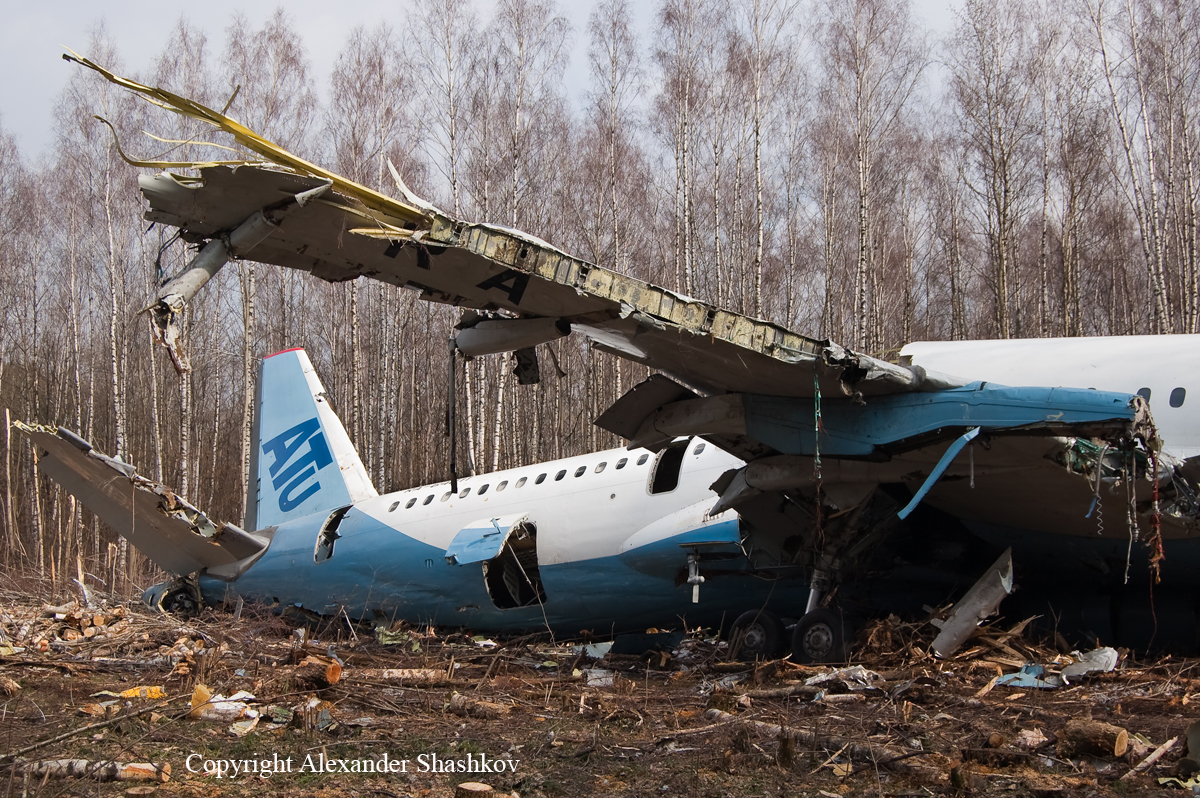
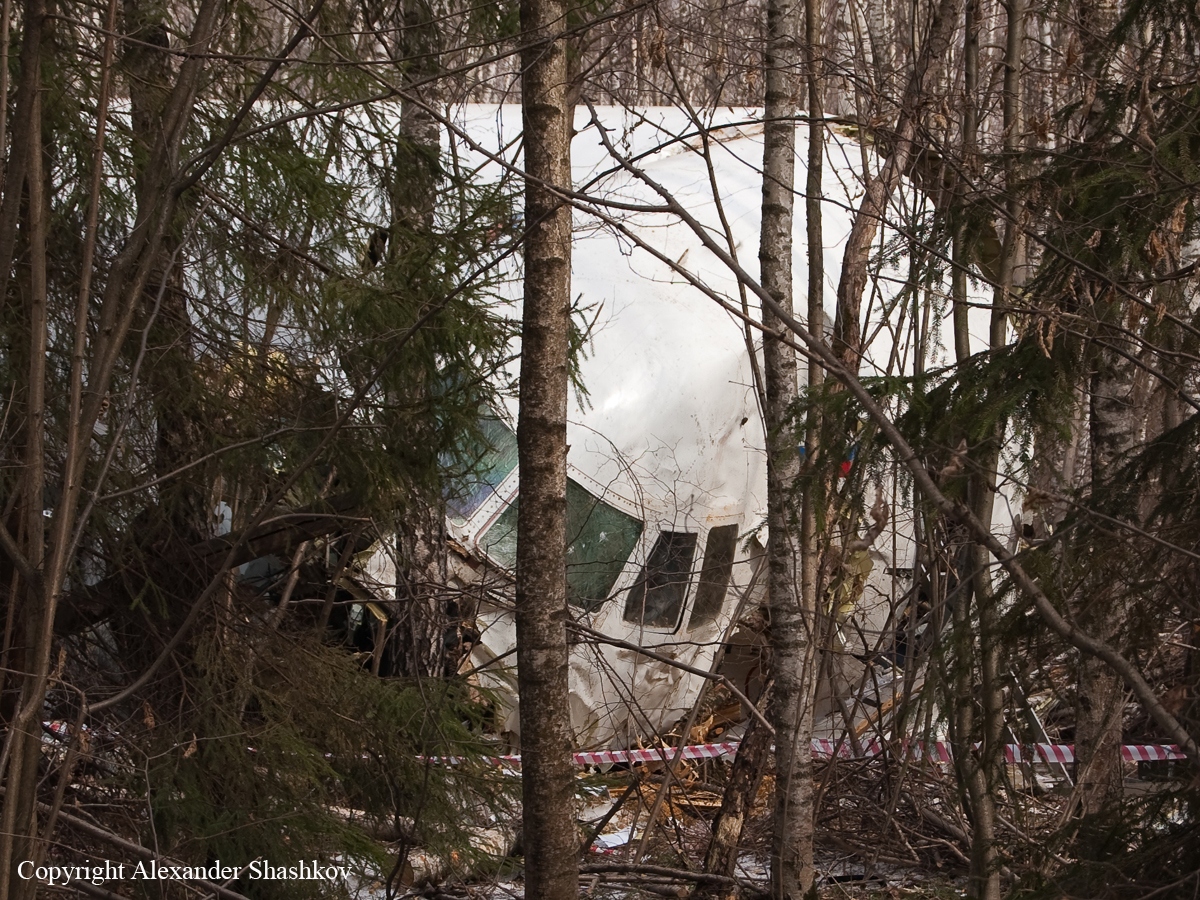
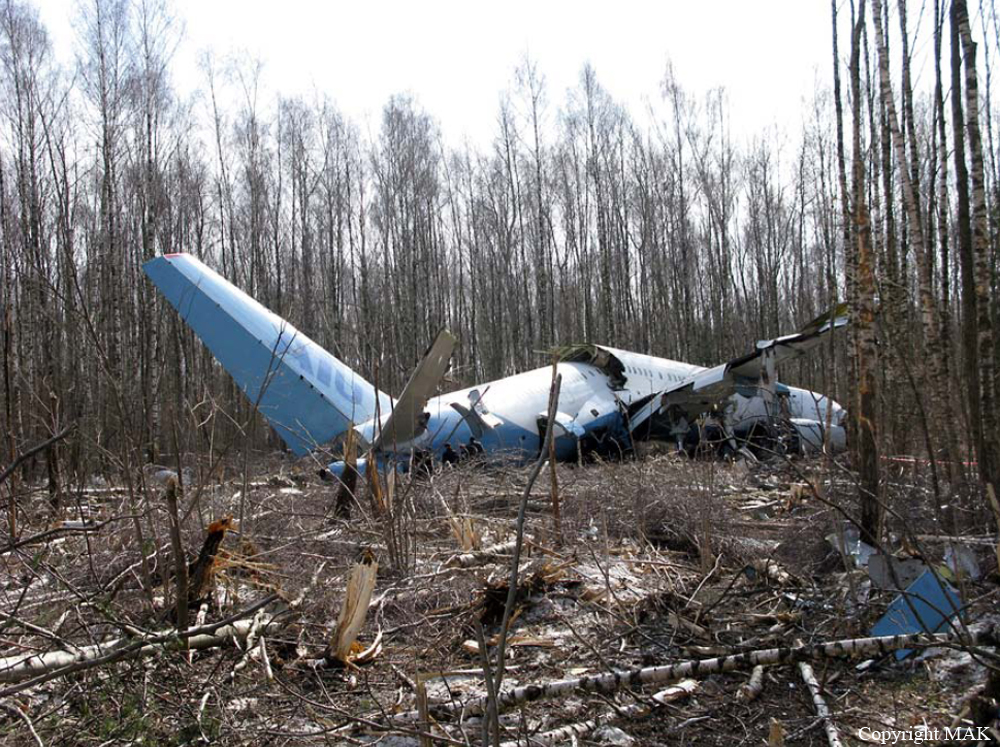
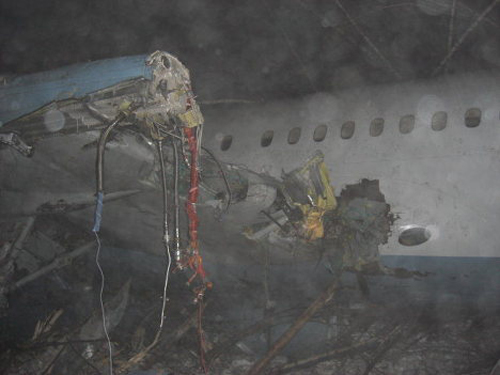

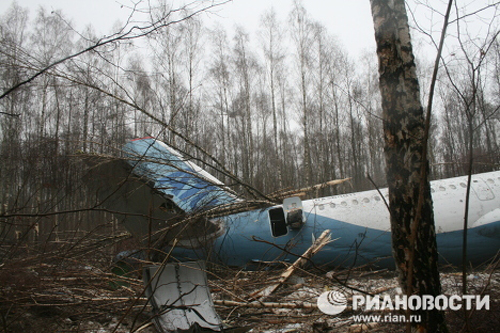
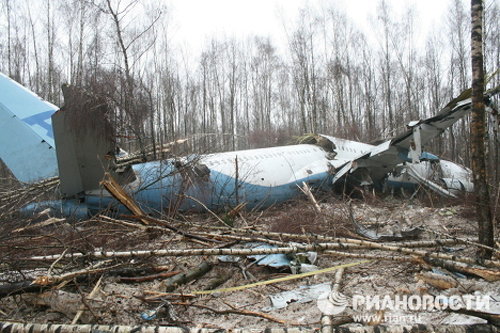
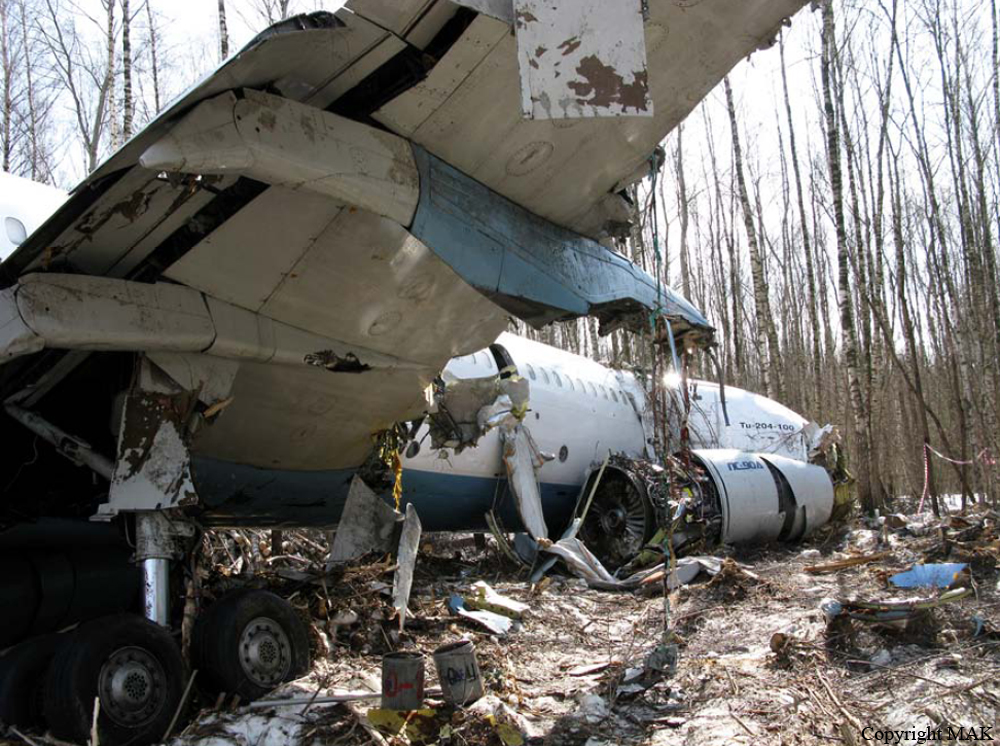
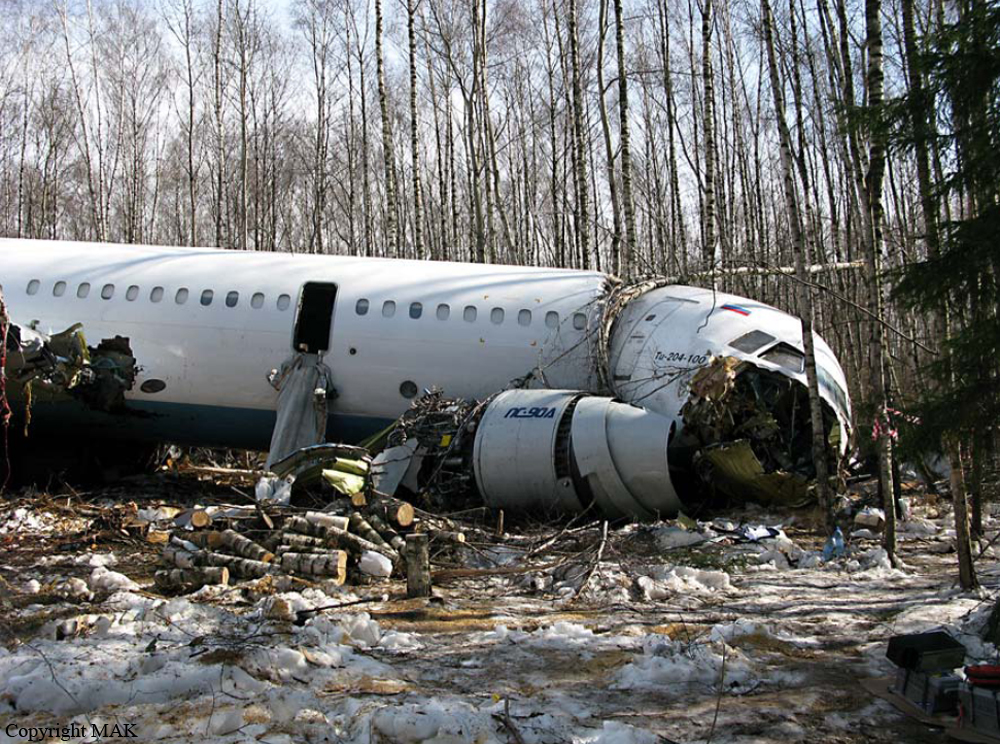
Crash of an Antonov AN-12BP in Moscow: 7 killed
Date & Time:
Jul 29, 2007 at 0417 LT
Registration:
RA-93912
Survivors:
No
Schedule:
Moscow – Omsk – Bratsk – Komsomolsk-on-Amur
MSN:
4 3 417 09
YOM:
1964
Flight number:
VAS9655
Crew on board:
7
Crew fatalities:
Pax on board:
0
Pax fatalities:
Other fatalities:
Total fatalities:
7
Circumstances:
The aircraft departed Moscow-Domodedovo Airport on a cargo flight to Komsomolsk-on-Amur with intermediate stops in Omsk and Bratsk, carrying seven crew members and a load of 9,043 kilos of various equipments for the Gagarin Aircraft Manufacturing Plant in Komsomolsk. The aircraft took off from Domodedovo Airport runway 32C at 0415LT. While climbing at a height of about 70-75 metres and a speed of 295 km/h, the aircraft collided with a flock of birds that struck both engines n°3 and 4. Almost simultaneously, both right engines stopped and their respective propeller autofeathered. The aircraft lost speed, rolled to the right to an angle of 45° then entered an uncontrolled descent before crashing a wooded area located 4 km from the airport, bursting into flames. The aircraft was totally destroyed and all 7 occupants were killed.
Probable cause:
Loss of control and subsequent ground impact during initial climb following the failure of both right engines due to a bird strike.
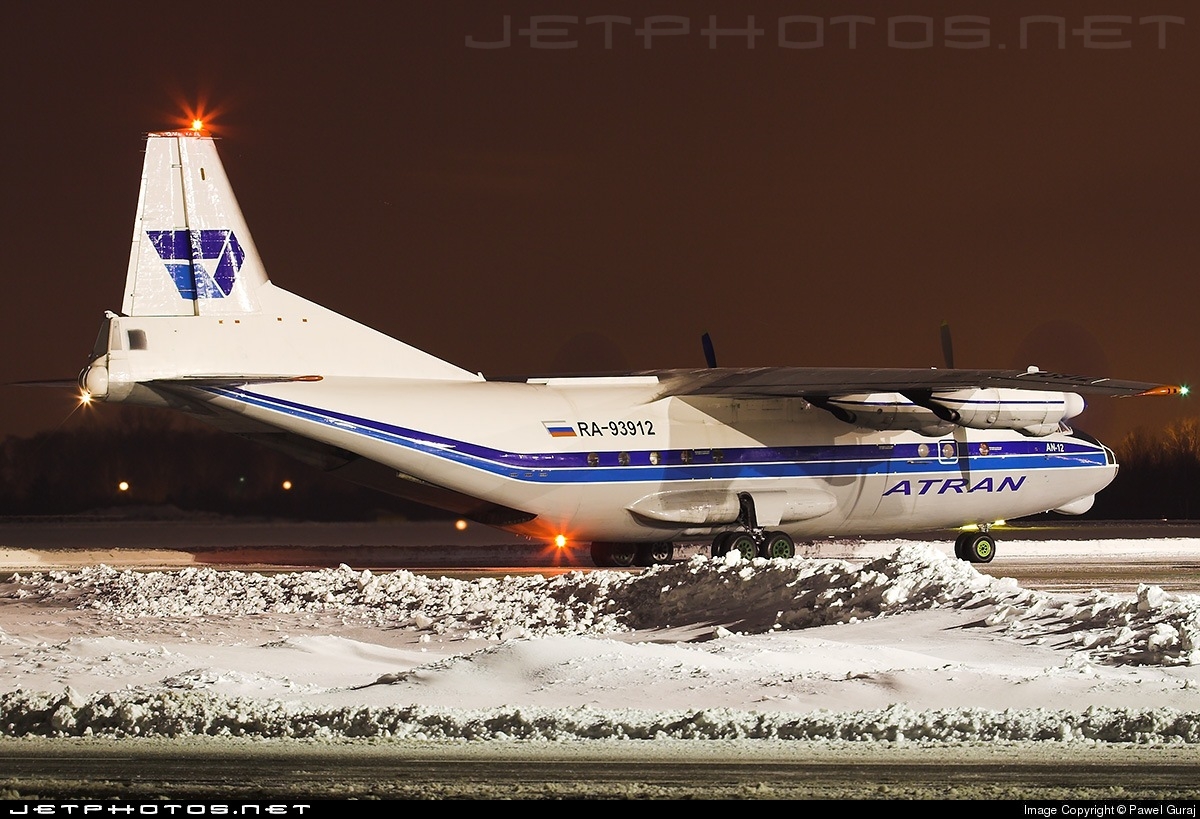
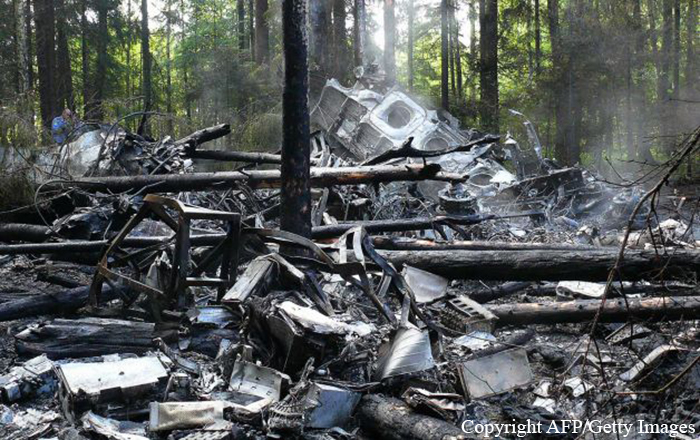

Crash of an Airbus A310-324 in Irkutsk: 125 killed
Date & Time:
Jul 9, 2006 at 0744 LT
Registration:
F-OGYP
Survivors:
Yes
Schedule:
Moscow - Irkutsk
MSN:
442
YOM:
1987
Flight number:
SBI778
Crew on board:
8
Crew fatalities:
Pax on board:
195
Pax fatalities:
Other fatalities:
Total fatalities:
125
Captain / Total hours on type:
1056.00
Copilot / Total hours on type:
158
Aircraft flight hours:
59865
Aircraft flight cycles:
12550
Circumstances:
On July 8, 2006 an А310 airplane with state registration number F-OGYP (France), leased by ОАО Aviakompania Sibir, and with a flight crew consisting of the Captain and the co-pilot, was flying scheduled passenger flight С7 778 from Domodedovo to Irkutsk. Apart from the two cockpit personnel, there were 6 flight attendants and 195 passengers on board (of these, 2 worked for the company), which included 181 nationals of Russia, 3 of Germany, 3 of the PRC, 2 of Poland, 3 of Belarus, 2 of Moldova and 1 of Azerbaijan. The airplane's payload according to the flight manifest was 19,800 kg (which included about 80 kg of hazardous freight - perfume), its take-off weight 140414 kg (maximum permissible – 150,000 kg), and center-of-gravity position 25.5% (the range of permissible center-of-gravity positions for take-off is 18% - 32%). Upon completion of the pre-flight preparation, the crew took off from Domodedovo airport at 17:17 (17:15 – as per schedule) and after climbing set a course for its destination airport of Irkutsk (alternate airport Bratsk). The flight proceeded without incident and at 22:17 the crew initiated descent for an approach and landing at Irkutsk airport. At 22:43:40 the airplane landed without misalignment on runway 30 at Irkutsk airport. Before the flight, in accordance with Sibir’s MEL, the maintenance personnel deactivated the thrust reverser on the airplane's left engine after hearing the crew's observation about this thrust reverser's malfunction during a previous flight. After touchdown all spoiler sections prepared ("armed") by the crew for utilization were deployed and the autobrake in Low mode, previously selected by the crew, was activated. The pilot moved the right engine (no. 2) thrust reverser forward. However, simultaneously with the subsequent reduction of the reverse mode of engine no. 2, engine no. 1 started to speed up (forward thrust), which led to an increase in airplane speed and the onset of torque that pulled the airplane to the right. The crew failed to perceive the cause of what was happening. In spite of intense wheel-braking efforts, the airplane used up the entire length of the runway and overshot its end at a speed of about 180 kph. The airplane then continued to travel on wet soil. At a distance of about 300 m from the departure threshold of the runway, the airplane collided with a concrete barrier of the aerodrome and then with some garages located directly behind the barrier, after which the airplane, now seriously damaged, stopped. As a result of the destruction of the fuel tanks the fuel ignited and fire penetrated the airplane's interior. As a result of the accident, 125 individuals died, including the two pilots and three of the flight attendants. The airplane was practically completely destroyed by the fire.
Probable cause:
The cause of Sibir A310 F-OGYP accident was the erroneous and uncontrolled actions by the crew during rollout after landing in a configuration with one engine reverser deactivated. After touchdown, the Captain, while acting on the reverse thrust lever of the right engine, inadvertently and uncontrollably moved the throttle lever for the left engine, whose thrust reverser was deactivated, from the "idle" to the significant forward thrust position. Inadequate monitoring and call-outs of airplane speed and engine parameters by the Co-pilot made it impossible for the crew to perform the necessary actions, either by moving the left throttle back to idle or shutting down the engines. The crew had enough time to recognize the situation. The airplane went off the runway at the high speed of ~180 km/h, hit the concrete fence and buildings, crashed and caught fire. 125 people died as a result of the accident.
Final Report:
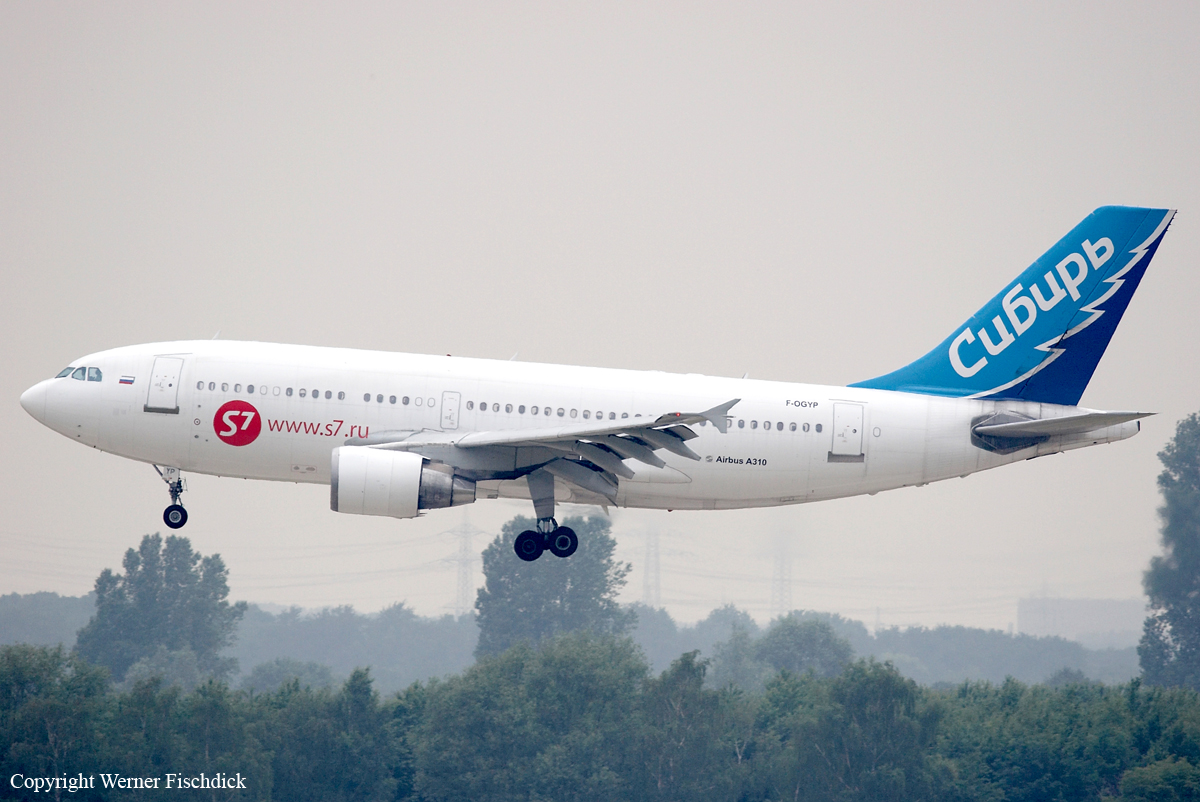

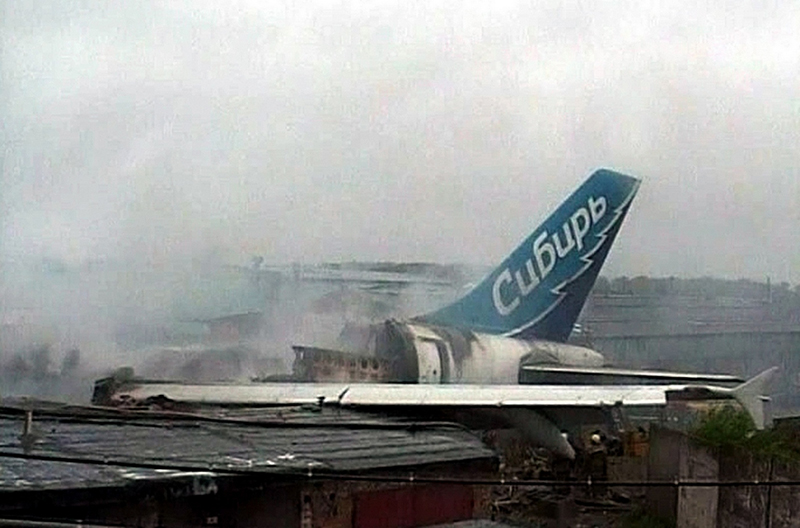
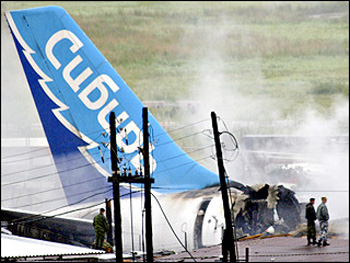
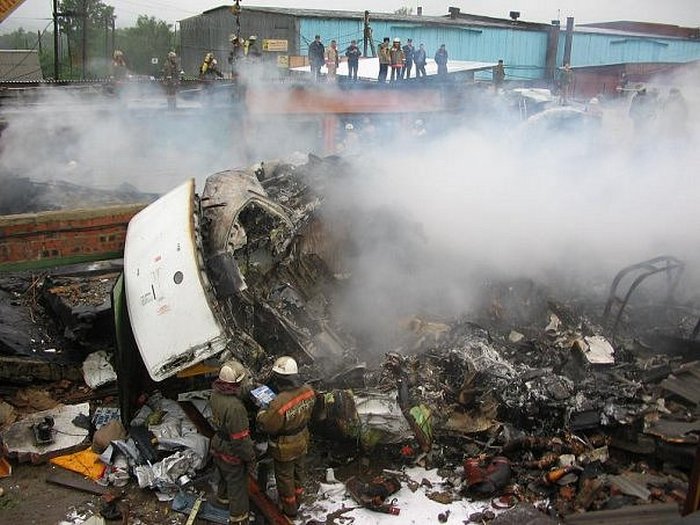
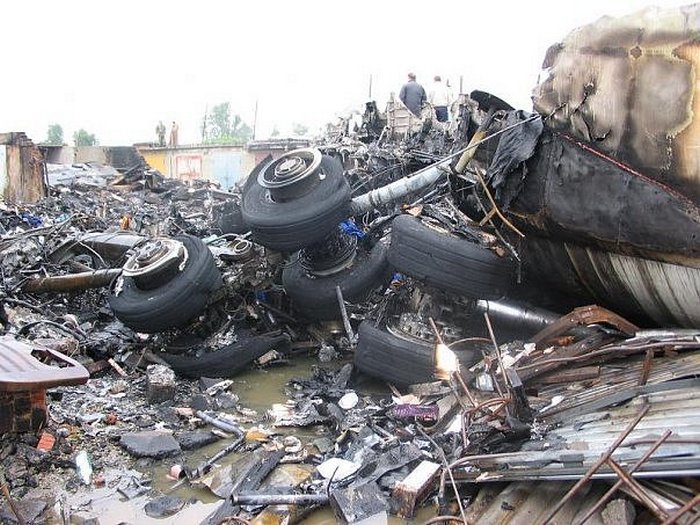
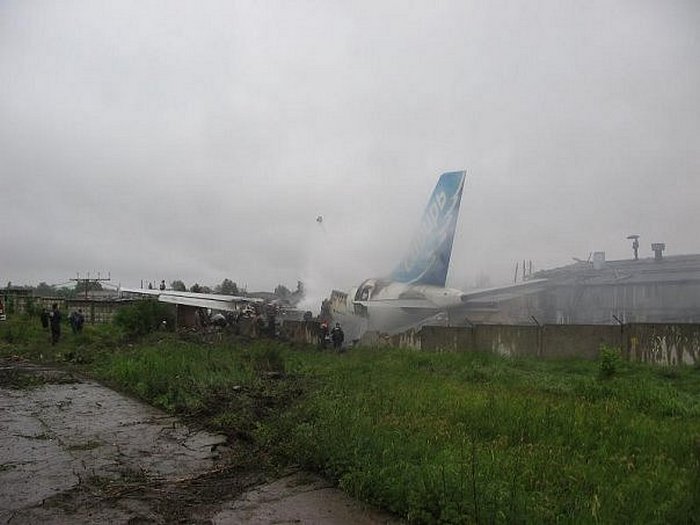
Crash of an Ilyushin II-62M in Moscow
Date & Time:
Mar 29, 2006 at 2051 LT
Registration:
5A-DKR
Survivors:
Yes
Schedule:
Mitiga - Moscow
MSN:
4053514
YOM:
1990
Crew on board:
6
Crew fatalities:
Pax on board:
0
Pax fatalities:
Other fatalities:
Total fatalities:
0
Circumstances:
The crew departed Mitiga on a positioning flight to Moscow-Domodedovo where the airplane should follow an overhaul program. The airplane crossed the runway 32R threshold at a height of 12 metres and with an excessive speed of 304 km/h. At a height of about five metres, the captain instructed the flight engineer to reduce the speed and to bring back the speed levers to idle. This instruction was confirmed by the flight engineer then the captain asked for the thrust reversers to be activated. In a certain confusion, the flight engineer did not confirm this instruction and asked again the order. Possibly due to a certain distraction, the flight engineer failed to position the power lever in the correction position. As a result, the aircraft floated at a height estimated between 0,5 and one metre before it landed firmly 1,100 metres past the runway threshold at a speed of 258 km/h. Unable to stop within the landing distance available, the aircraft overran, lost its undercarriage and came to rest 680 metres further, broken in three. All six occupants were rescued, among them two were injured.
Probable cause:
The accident occurred as a result of erroneous actions by the flight engineer during operations to turn on the engine reverse when landing the plane, expressed in shifting the reverse buckets to direct thrust and putting the 1st and 4th engines to take-off mode after landing. The Commission concluded that the flight engineer’s erroneous actions were facilitated by:
- A low level of technological discipline in the crew due to the weak role of the captain as a leader in the crew, which was manifested in the crew members not fully fulfilling the "Instructions for the interaction and technology of the crew members of the IL-62M aircraft" and Aircraft Flight Manual during descent, approach and landing,
- Emotional relaxation of the crew at the end of a business trip and return to base,
- Lack of effective control, including according to the data of flight recorders over flight operations with LIBAVIA,
- In the "Instructions for the interaction and technology of the crew of the IL-62M aircraft" there are no control functions on the part of other crew members for the actions of the flight engineer at the stage of aircraft landing and the status of the reverse on/off alarm,
- The absence in the training programs of the simulator of exercises for practicing the actions of crew members in case of erroneous actions by the flight engineer when the reverse is turned on,
- Lack of equipment for the flight engineer’s workplace with a radio headset, lack of procedures in the "Instructions for Interaction and the Work Technology of the Crew Members of the Il-62M Aircraft" for the use of a radio headset for flight personnel in flights with a reduced crew,
- Excessive volume of the SSU speakers broadcasting external radio communications, which created additional difficulties when listening to the commands given by the captain,
- Fuzziness (illegibility) of the commands given by the PIC and the lack of response of the PIC to the non-confirmation of the commands given by him to the flight engineer.
- A low level of technological discipline in the crew due to the weak role of the captain as a leader in the crew, which was manifested in the crew members not fully fulfilling the "Instructions for the interaction and technology of the crew members of the IL-62M aircraft" and Aircraft Flight Manual during descent, approach and landing,
- Emotional relaxation of the crew at the end of a business trip and return to base,
- Lack of effective control, including according to the data of flight recorders over flight operations with LIBAVIA,
- In the "Instructions for the interaction and technology of the crew of the IL-62M aircraft" there are no control functions on the part of other crew members for the actions of the flight engineer at the stage of aircraft landing and the status of the reverse on/off alarm,
- The absence in the training programs of the simulator of exercises for practicing the actions of crew members in case of erroneous actions by the flight engineer when the reverse is turned on,
- Lack of equipment for the flight engineer’s workplace with a radio headset, lack of procedures in the "Instructions for Interaction and the Work Technology of the Crew Members of the Il-62M Aircraft" for the use of a radio headset for flight personnel in flights with a reduced crew,
- Excessive volume of the SSU speakers broadcasting external radio communications, which created additional difficulties when listening to the commands given by the captain,
- Fuzziness (illegibility) of the commands given by the PIC and the lack of response of the PIC to the non-confirmation of the commands given by him to the flight engineer.
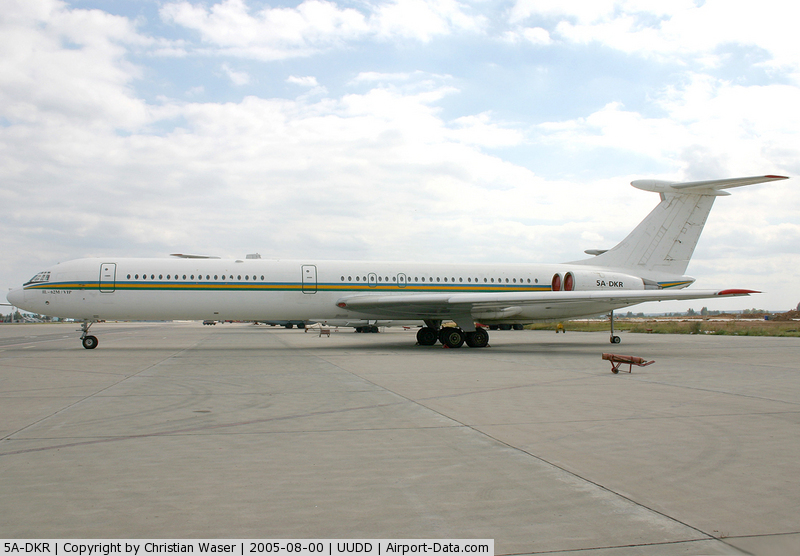
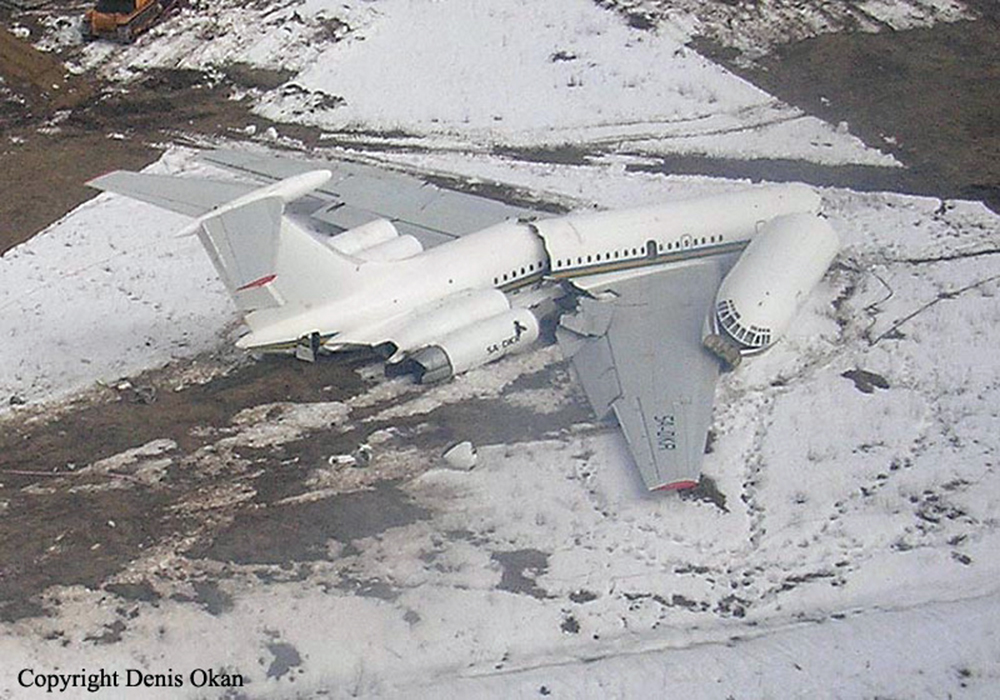
Crash of a Dassault Falcon 20C-5 in Kiel
Date & Time:
Feb 15, 2006 at 1945 LT
Registration:
F-OVJR
Survivors:
Yes
Schedule:
Moscow - Luton
MSN:
180
YOM:
1969
Crew on board:
3
Crew fatalities:
Pax on board:
3
Pax fatalities:
Other fatalities:
Total fatalities:
0
Aircraft flight hours:
10413
Circumstances:
En route from Moscow-Domodedovo to Luton, while cruising over Germany, the crew declared an emergency following smoke spreading in the cabin and the cockpit. The crew was cleared to divert to Kiel-Holtenau Airport. After landing by night on runway 26 which is 1,265 metres long, the aircraft was unable to stop within the remaining distance. It overran and came to rest in a ravine. All 6 occupants escaped uninjured while the aircraft was damaged beyond repair.
Probable cause:
It was determined that the flight attendant inadvertently set off a smoke canister intended for emergencies, causing smoke to spread in the the cabin. The crew was forced to divert to the nearest airport for an emergency landing. The following contributing factors were identified:
- The pilots failed to use the reverse thrust systems and the braking parachute after landing,
- Improper storage of emergency smoke canister in the cabin,
- Poor crew training related to the emergency equipment.
- The pilots failed to use the reverse thrust systems and the braking parachute after landing,
- Improper storage of emergency smoke canister in the cabin,
- Poor crew training related to the emergency equipment.
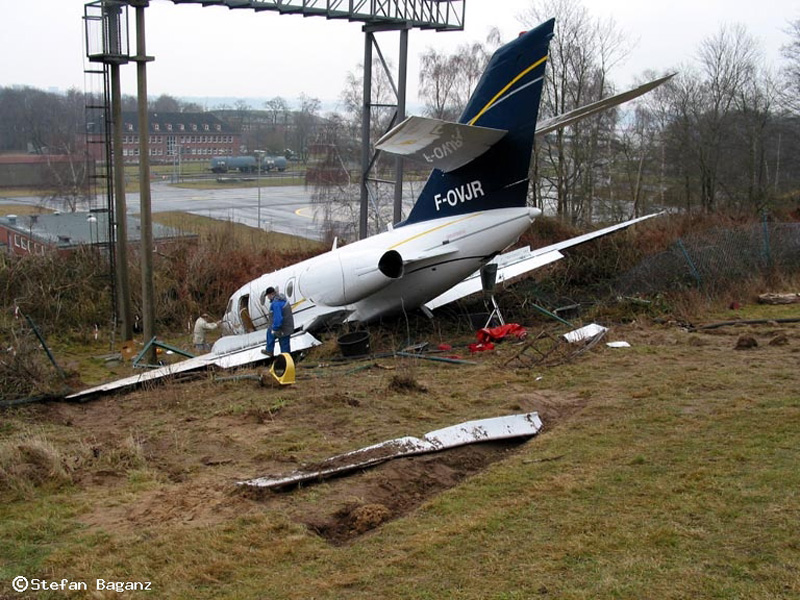
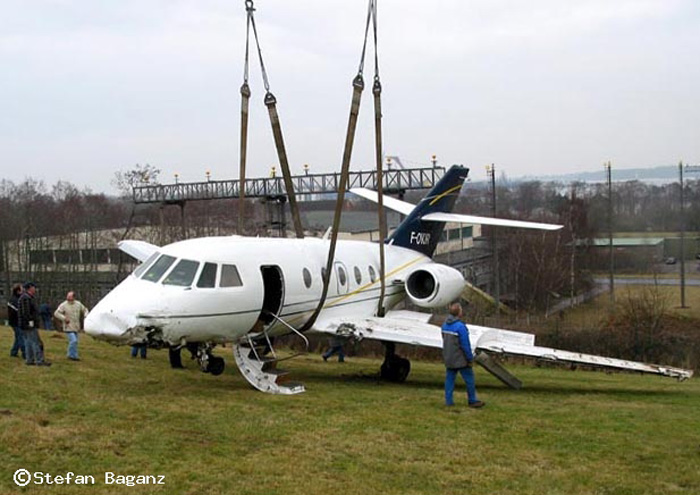
Crash of a Cessna 208B Grand Caravan in Staroye: 8 killed
Date & Time:
Nov 19, 2005 at 2233 LT
Registration:
P4-OIN
Survivors:
No
Schedule:
Voronezh - Moscow
MSN:
208B-1052
YOM:
2004
Crew on board:
2
Crew fatalities:
Pax on board:
6
Pax fatalities:
Other fatalities:
Total fatalities:
8
Circumstances:
The single engine aircraft departed Voronezh at 2117LT on a special flight to Moscow-Domodedovo Airport with 6 pax and 2 pilots on board, ETA Moscow 2240LT. While approaching Stupino and descending to Domodedovo Airport by night, the crew encountered poor weather conditions with snow falls, poor visibility, icing conditions and turbulences. Passing Stupino at an altitude of 1,500 metres, the aircraft pitched up in an angle of 9° and at a speed of 102 knots, it nosed down 40° then entered an uncontrolled descent until it crashed at a speed of 226 knots in a wooded area located in Staroye, about 10 km from Stupino. The aircraft was destroyed by impact forces and a post crash fire and all 8 occupants were killed.
Probable cause:
Loss of control in icing conditions.
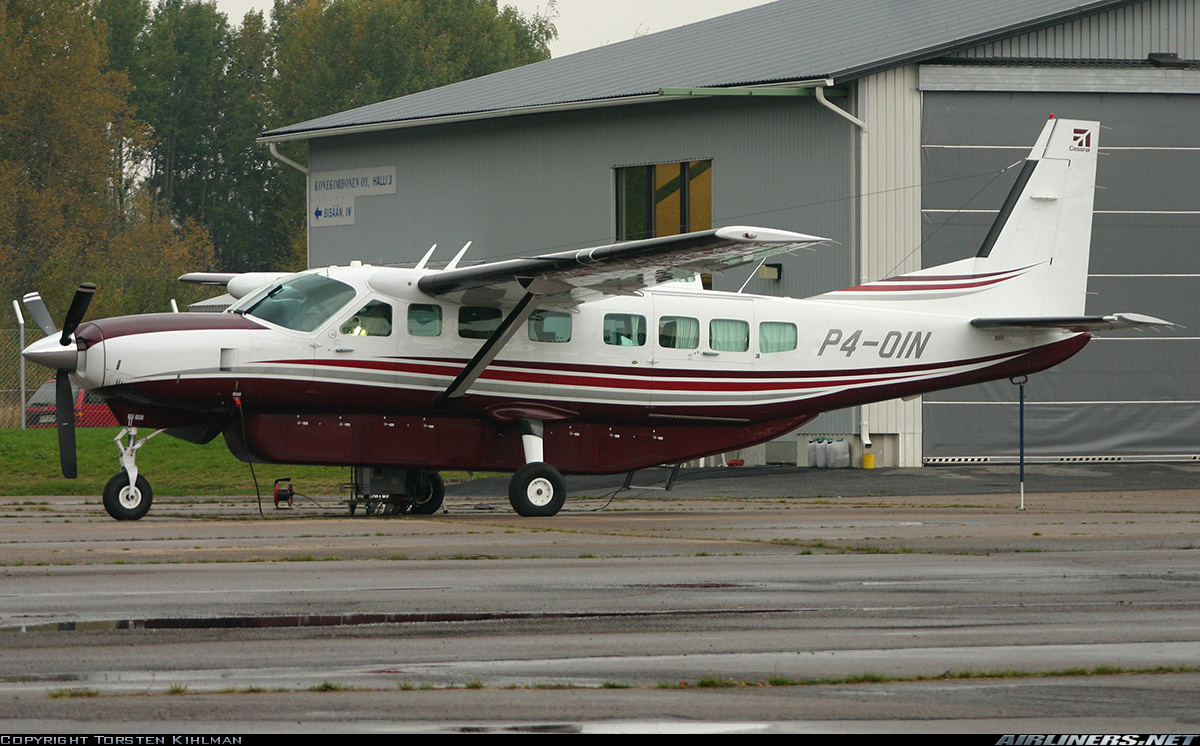
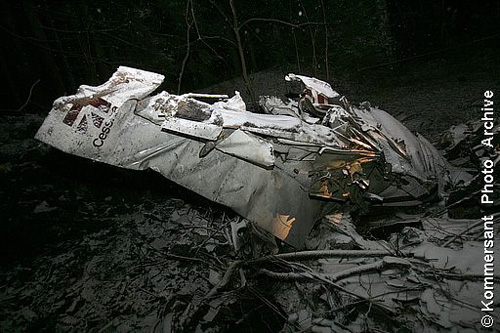
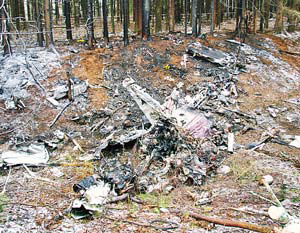
Crash of a Tupolev TU-154B-2 near Gluboki: 46 killed
Date & Time:
Aug 24, 2004 at 2253 LT
Registration:
RA-85556
Survivors:
No
Schedule:
Moscow - Sochi
MSN:
82A556
YOM:
1982
Flight number:
SBI1047
Crew on board:
8
Crew fatalities:
Pax on board:
38
Pax fatalities:
Other fatalities:
Total fatalities:
46
Aircraft flight hours:
30751
Circumstances:
The aircraft departed Moscow-Domodedovo Airport at 2140LT on a schedule service to Sochi-Adler Airport. At 2253LT, while cruising at an altitude of 12,100 metres, the aircraft suffered an in-flight explosion, entered an uncontrolled descent and crashed in a field located near Gluboki. First rescuers arrived on the scene about 8 hours later. The aircraft was totally destroyed and all 46 occupants were killed.
Probable cause:
The Federal Safety Board (FSB) reported 3 days later that the accident was the consequence of the explosion of a bomb. Two women flying from Makhatshala landed in Moscow at 1945LT and were able to embark with the explosive device following security deficiencies. Traces of hexogene were found on debris.






Crash of a Tupolev TU-134A-3 in Buchalki: 44 killed
Date & Time:
Aug 24, 2004 at 2253 LT
Registration:
RA-65080
Survivors:
No
Schedule:
Moscow - Volgograd
MSN:
60065
YOM:
1977
Flight number:
WLG1303
Crew on board:
9
Crew fatalities:
Pax on board:
35
Pax fatalities:
Other fatalities:
Total fatalities:
44
Aircraft flight hours:
30751
Circumstances:
The aircraft departed Moscow-Domodedovo Airport at 2230LT on a regular service to Volgograd with 35 passengers and a crew of nine on board. Some 23 minutes later, while cruising at an altitude of 8,100 metres, the aircraft suffered an in-flight explosion, entered an uncontrolled descent and crashed in a field located near Buchalki. The wreckage was found in the middle of the night and all 44 occupants were killed. The accident occurred at the same time of a Tupolev TU-154 operated by Sibir Airlines.
Probable cause:
The Federal Safety Board (FSB) reported 3 days later that the accident was the consequence of the explosion of a bomb. Two women flying from Makhatshala landed in Moscow at 1945LT and were able to embark with the explosive device following security deficiencies.
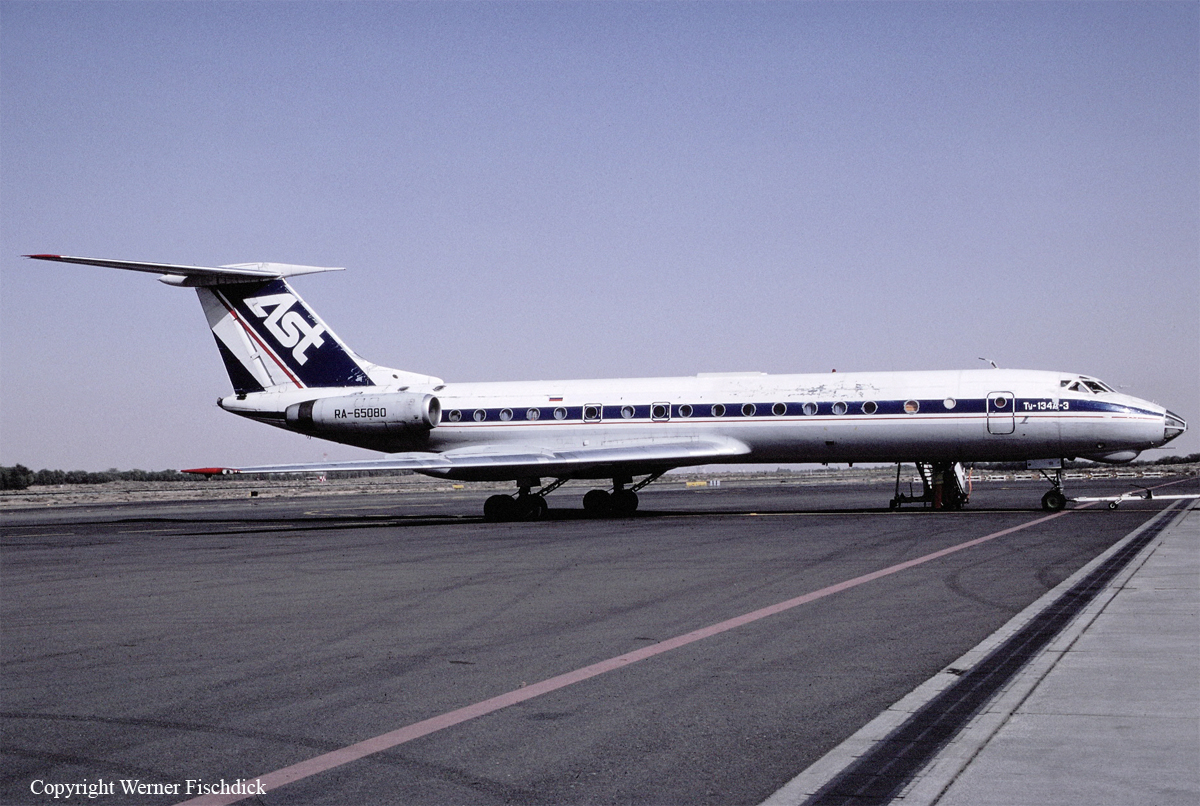

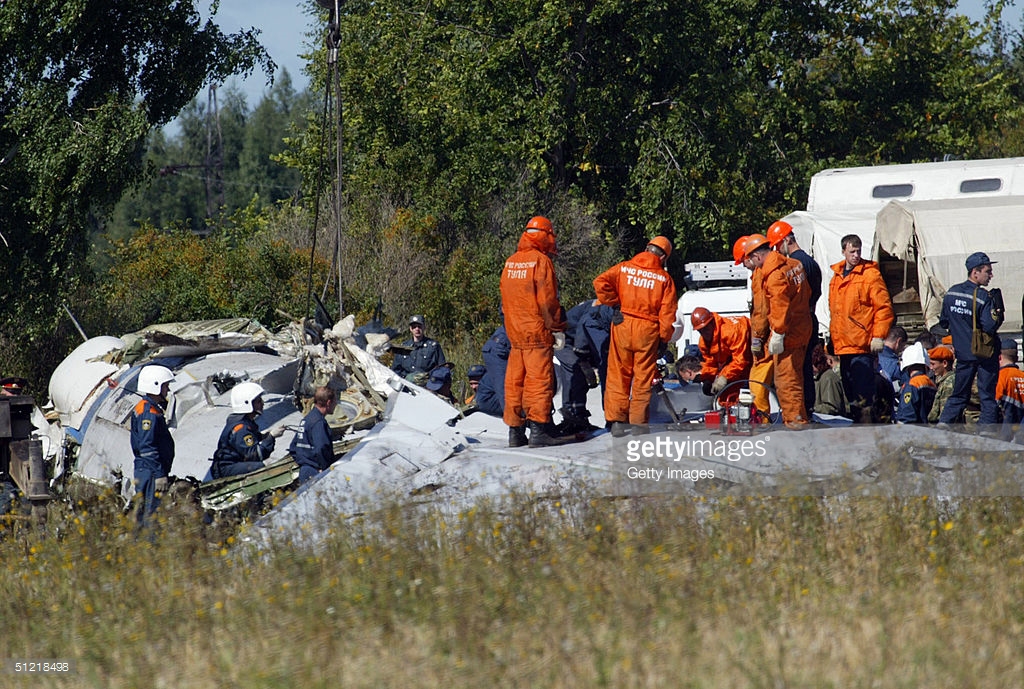
Crash of an Ilyushin II-62M in Bishkek
Date & Time:
Oct 23, 2002 at 0457 LT
Registration:
RA-86452
Survivors:
Yes
Schedule:
Moscow - Bishkek
MSN:
16 22 2 1 2
YOM:
1976
Crew on board:
9
Crew fatalities:
Pax on board:
0
Pax fatalities:
Other fatalities:
Total fatalities:
0
Aircraft flight hours:
34662
Aircraft flight cycles:
6060
Circumstances:
The aircraft departed Moscow-Domodedovo Airport on a positioning flight Bishkek-Manas Airport where cargo should be loaded. The water ballast tanks were not filled, causing the centre of gravity to be outside the allowed limits. After passing the outer marker on approach to runway 26, a 15-second period of oscillations started with changes in bank angle and heading (between 245° and 255°). The plane passed over the runway threshold at a height of 30 metres and at a speed of 293 km/h. At this point the altitude should have been 15 metres. At a height of 20 metres, at a speed of 297 km/h, the thrust reversers of the n°1 and 4 engines were deployed. This was contrary to regulations, which stipulate that thrust reversers may only be deployed at the leveling-off altitude of 5-8 metres. The nose then rose to a 7° pitch angle. This was caused by the activation of the thrust reversers and the centre of gravity which was too far aft. The pitch-up could not be countered by a 13° nose down elevator application. The plane finally touched down on the maingear wheels 1395 metres down the 4,200 metres long runway. The flight engineer, without telling the pilot in command, shut down the n°2 and 3 engines. With an elevator-down deflection of 10-11° and the stabilizer at -3,3° the crew were still not able to get the nose gear on the ground. After retracting the thrust reversers and with the elevator deflected in a 21° nose-down attitude, the nose pitched down from +7° to -2,5° in 2-3 seconds. The stabilizer was then trimmed from -3,3° to +9° which caused the pitch angle to increase again. The Ilyushin ran off the left side of the runway 3,001 metres past the runway threshold. The plane continued until colliding with a concrete obstruction. The aircraft caught fire and burned out almost completely.
Probable cause:
Wrong approach configuration on part of the flying crew, which caused the airplane to land too far down the runway. The following contributing factors were identified:
- Poor crew coordination,
- The pilot-in-command who was also the General Manager of the company, did not had sufficient training and qualifications to act in such position,
- Poor crew resources management,
- Poor flight and approach planning.
- Poor crew coordination,
- The pilot-in-command who was also the General Manager of the company, did not had sufficient training and qualifications to act in such position,
- Poor crew resources management,
- Poor flight and approach planning.
